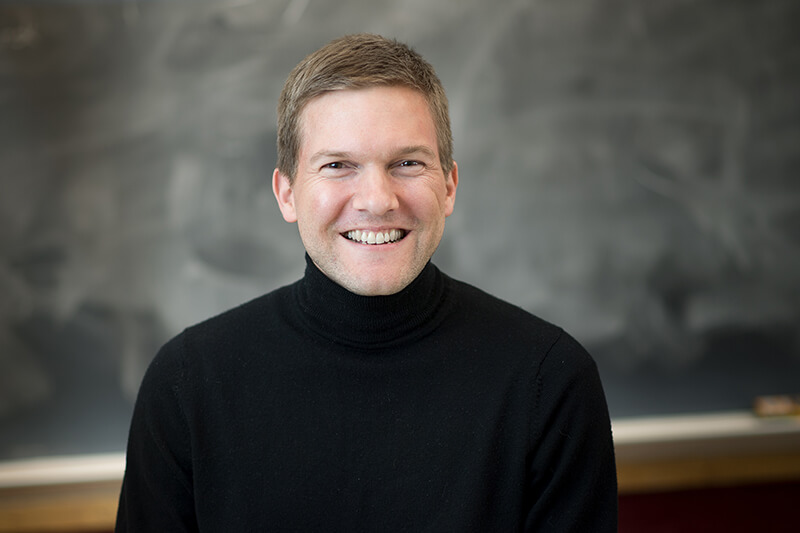April 19, 2017
Exceptional Early Career Award: David Sears
 David Sears, clinical assistant professor of educational psychology. (Purdue University photo/John Underwood)
Download image
David Sears, clinical assistant professor of educational psychology. (Purdue University photo/John Underwood)
Download image
In recognition of outstanding undergraduate teaching, two professors recently received the 2017 Exceptional Early Career Award. This Q&A focuses on award recipient David Sears, clinical assistant professor of educational psychology.
Years in current position at Purdue: 3.
Teaching interests: Practices of effective teachers and classrooms, research methods and experimental design, collaborative versus individual learning, and transfer of learning (e.g., the ability to apply and adapt learning to new contexts beyond the classroom).
On working to ensure that students are successful as they apply and adapt learning beyond the classroom context: Transfer of learning is a key goal of my teaching, and I make that explicit from the first day of class. My teaching assistants and I support transfer by modeling it, engaging students in targeted and open-ended transfer practice, and by testing for it. Transfer can be promoted by supporting students’ initial discernment and mastery of key concepts such as by giving contrasting examples. It also can be supported through simulated and real classroom experiences. For example, our undergraduates work to identify key course concepts in other teachers’ practices to help foster a theory-based lens through which to understand classroom phenomena (discernment). Video cases, problem scenarios, and teaching placements support these activities. Of course, it is not enough just to be able to see a concept in practice; they must be able to enact or apply the concept. Our students practice diagnosing and explaining how they would handle various scenarios, engage in simulated school events, and work with each other and in real classrooms with subsequent reflection.
On the most important skill students can develop that will prepare them for a successful future in education: Assuming they already have a growth mindset toward children’s learning and their own performance, I think the key skill is to learn the synergistic relationship between the social-emotional aspects and routines of the classroom and the cognitive aspects. Some of my colleagues’ research suggests that many teachers manage the social-emotional environment of the classroom well but a factor that differentiates some of the most effective teachers is their ability to push for deep understanding. This is partly why I emphasize transfer so much in my class and why our students read research articles about how to promote transfer, develop transfer assessments, and design transfer-supporting lessons. I want our students to be aware of the educational research resources that are available to them here at Purdue, and I want them to be prepared to learn from them so that going forward they can ask their own questions and keep developing their theoretical lenses that can inform better practice.
On the activity that best prepares Sears’ students for the professional world: One activity that students frequently mention as beneficial is seeing short video clips of real teachers in real classrooms engaging in various activities that reflect key concepts. During these clips, I will frequently stop the video and ask students to discuss with a partner and then share with the class what concepts they notice, and this often prompts additional discussion and opportunities for conceptual clarification or elaboration. I think these activities are a key bridge supporting transfer from theory to practice.
What Sears enjoys most about teaching: I find it tremendously validating when students tell me, sometime after they’ve graduated from my class, that they continue to use and benefit from what they learned. In class, I love it when I can begin to see the classroom community come together, where students ask me questions and show keen interest in a topic but also seek answers and input from their peers. The strong bonds that can form in such a learning community allow a class to multiply the opportunities for learning, now and into the future, that go far beyond what I could accomplish alone.
What his students say: Dr. Sears taught me more about the field of education, how to work with children, and how to manage a classroom than any other education class. I feel more prepared to teach in a classroom because of his class than any other block education classes combined. He was helpful, understanding, open to feedback, and sincerely kind throughout the semester. … Dr. Sears cares about his students more than any other professor I’ve ever had. He is always genuine. Through his demeanor and his teaching, you can tell that he wants us to succeed …. I will be a better educator thanks to him.
Writer: Kelsey Schnieders, kschnied@purdue.edu

